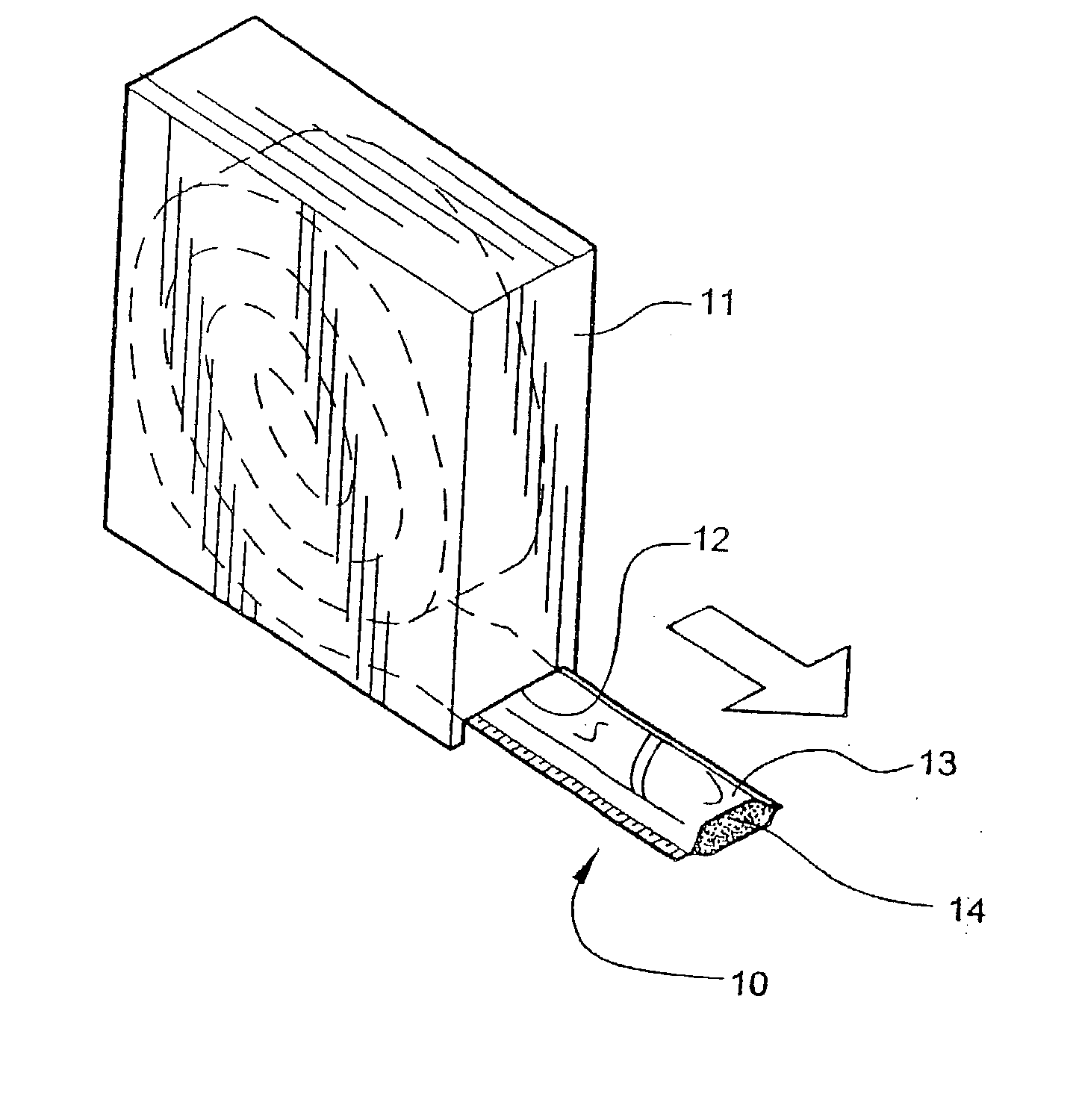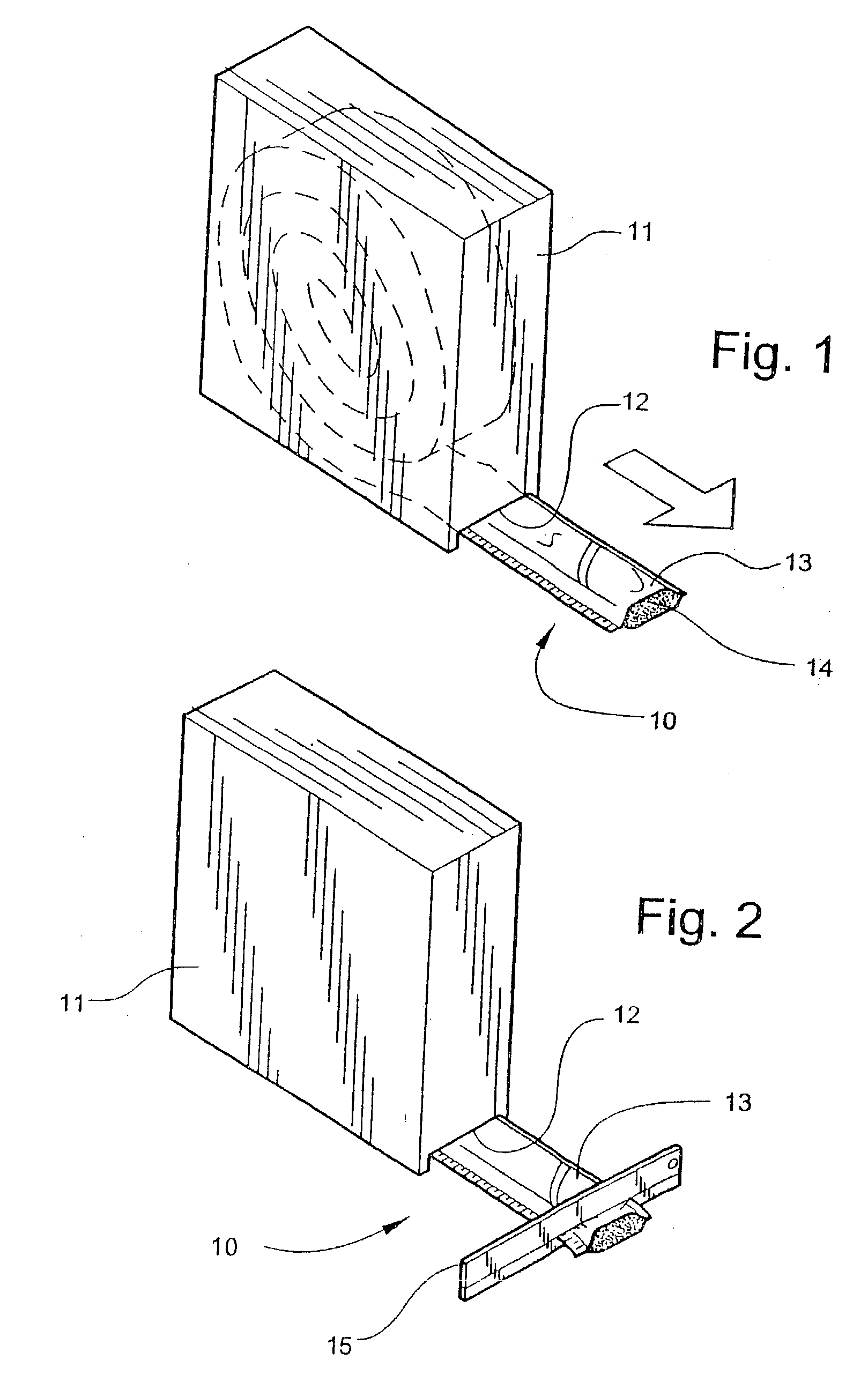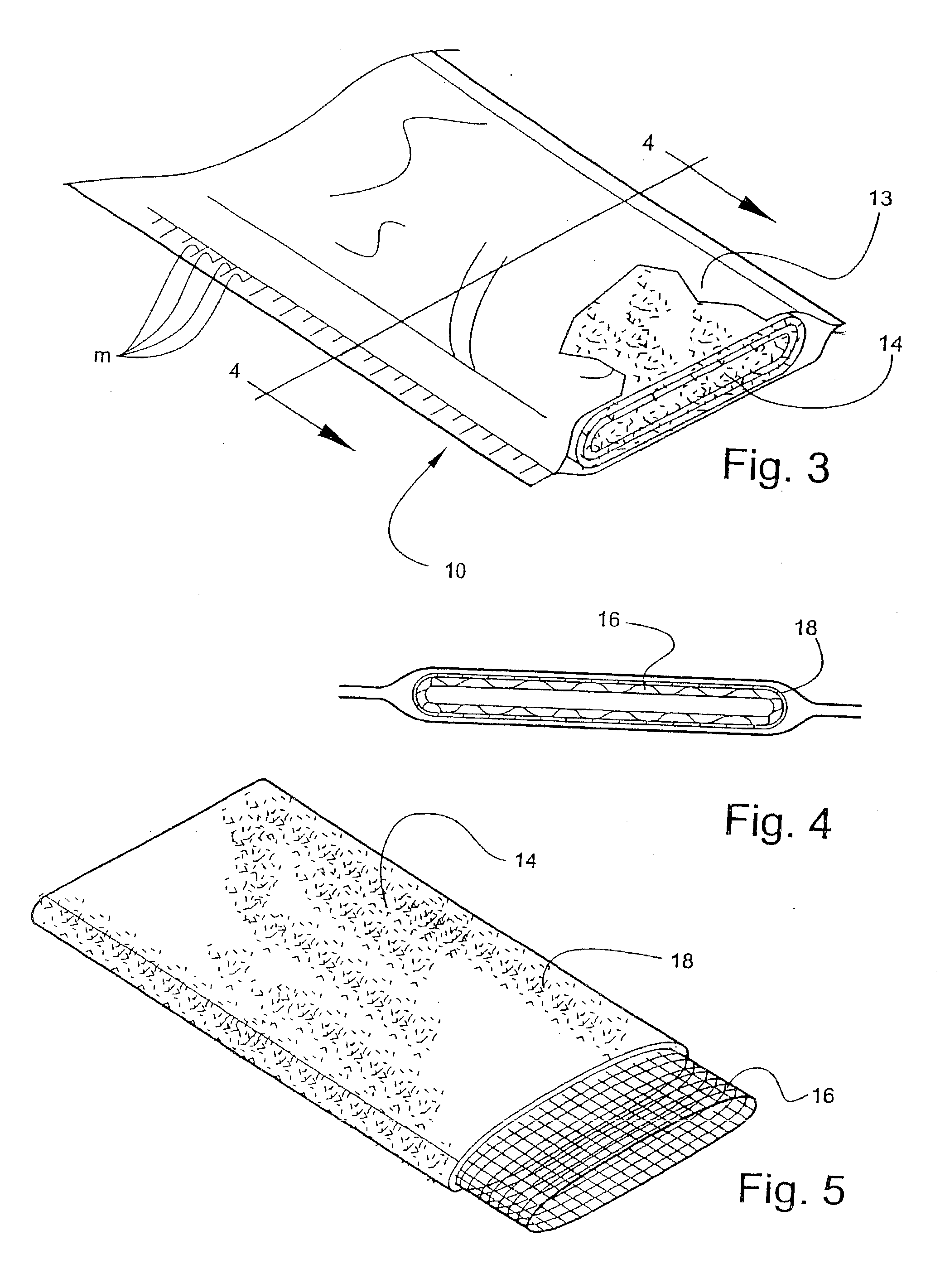Medical bandaging product with tubular-knitted substrate and method of constructing same
- Summary
- Abstract
- Description
- Claims
- Application Information
AI Technical Summary
Benefits of technology
Problems solved by technology
Method used
Image
Examples
Embodiment Construction
[0054] Referring now specifically to the drawings, a according to the present invention is illustrated in FIG. 1 and shown generally at reference numeral 10.
[0055] Referring now specifically to the drawings, a medical bandaging product according to the present invention is shown generally in FIG. 1 at 10. Bandaging product 10 may be sold in any convenient length, such as 24 feet, and is rolled into a coil and positioned in a suitable dispenser carton 11. Dispenser carton 11 is provided with a slot 12 at one lower corner through which bandaging product 10 extends.
[0056] Bandaging product 10 is comprised generally of an outer elongate sleeve 13 which is formed of a moisture-impervious material, such as two laminated elongate sheets placed in registration and heat sealed along its opposite sides to form a tube. The outer layer is formed of a tear-resistant plastic film. The middle layer comprises aluminum foil and acts as a moisture barrier. The inner layer is a plastic film having the...
PUM
 Login to View More
Login to View More Abstract
Description
Claims
Application Information
 Login to View More
Login to View More - R&D
- Intellectual Property
- Life Sciences
- Materials
- Tech Scout
- Unparalleled Data Quality
- Higher Quality Content
- 60% Fewer Hallucinations
Browse by: Latest US Patents, China's latest patents, Technical Efficacy Thesaurus, Application Domain, Technology Topic, Popular Technical Reports.
© 2025 PatSnap. All rights reserved.Legal|Privacy policy|Modern Slavery Act Transparency Statement|Sitemap|About US| Contact US: help@patsnap.com



